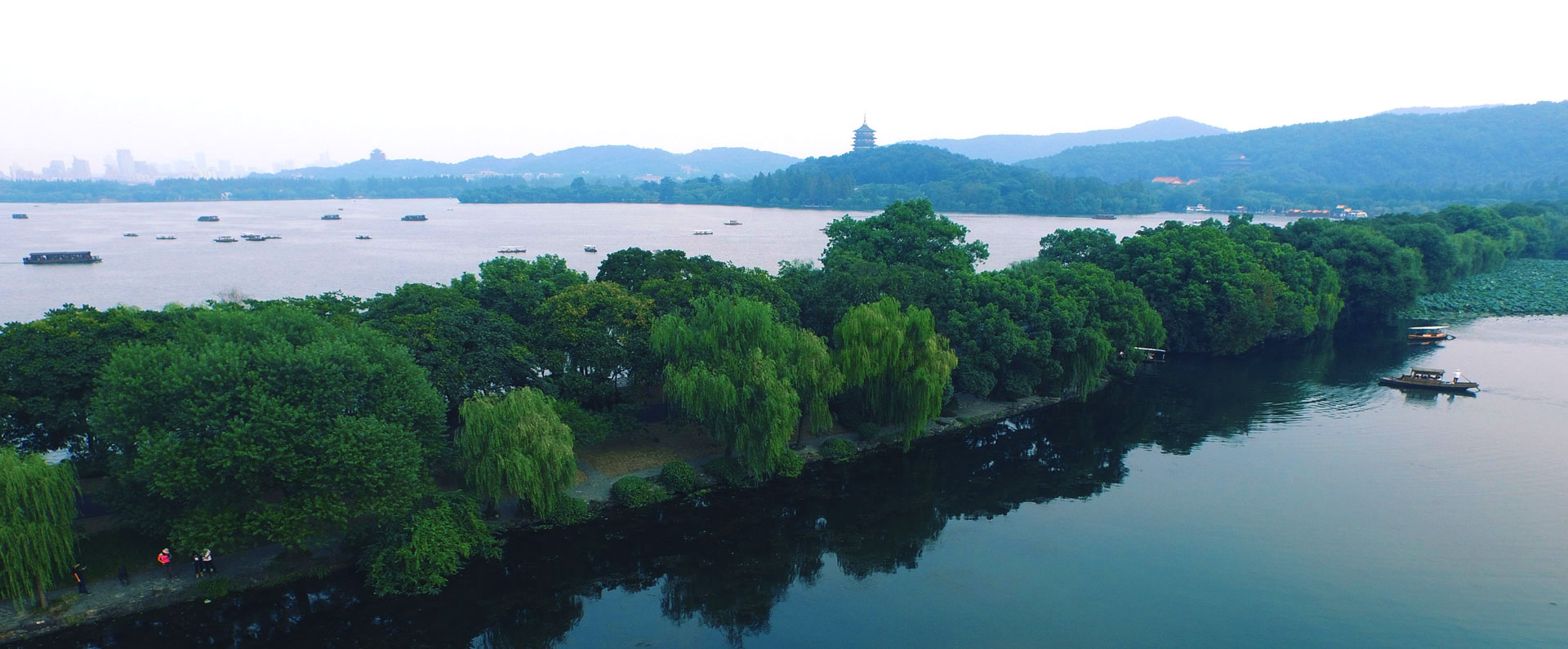Highlights
Researchers Develop Ecological Basement Improvement and Submerged Plant Restoration Technologies for Different Substrate Habitats

Hangzhou West Lake (Image by IHB)
With more than a decade’s efforts, the research group led by Prof. WU Zhenbin from Institute of Hydrobiology (IHB) of Chinese Academy of Sciences, developed the ecological basement improvement and submerged plant restoration technologies for different substrate habitats.
Aiming at the technical problem that the special sediment of West Lake is not conducive to the recovery of submerged plants, they innovatively prepared the environment-friendly composite substrate modifier and submerged plant carrier with a variety of modified materials.
Sediment improved materials contain a variety of constant and trace elements, which are beneficial to the biological growth, and rare earth elements and trace amino acids known as growth regulators.
The material can increase the bottom gap, speed up the bottom or humus content of organic matter transformation, and promote the growth of plant root. It also has strong adsorption properties so that the sediment was in situ remediated and provide nutrition for submerged plant growth at the same time.
The biofilms formed on the surface of the modified materials and the rhizosphere microorganisms of submerged plants can degrade mineralized organic compounds, improve the living environment of the sediment, and make it suitable for the growth of submerged plants.
Meanwhile, they can in situ adsorb organic compounds and other pollutants in the sediment, thus speeding up the recovery and construction of a healthy ecosystem.
The research team has successfully applied the technology to reconstruct a stable complex submerged plants community in more than one square kilometer of the lake area, creating a spectacular "underwater forest".
They found that, with the implementation of the submerged plant restoration project, the ecological effect is significant.
"The concentration of nutrients in the water has been reduced, and the water quality has been improved." Wu said. "What’s more, the transparency of the water, the diversity of phytoplankton and zooplankton has also been evidently improved."
The West Lake is the first Chinese cultural heritage of lakes inscribed in the World Heritage List. It is a typical representative of urban landscape lakes in China. Located in the east of Hangjiahu area in the Taihu Basin, it is a closed urban shallow lake.
However, the water ecological problems of West Lake become increasingly prominent due to climate change and expansion of cities. It is very important and urgent to further improve the water environment quality, restore the water ecosystem and enhance the lake ecological service function.
The restoration of submerged vegetation is the key to the ecological restoration of West Lake, yet the sediment habitat "ash soil" of the West Lake makes it difficult for submerged plants to grow and propagate. The technology developed by IHB has effectively solved this technical bottleneck.
Related results were published online in the journal Water Research.

Land-use type and locations of the sampling sites in Hangzhou West Lake, China (Figure by IHB)

Schematic diagram of sediment improved materials promoting submerged plant growth (Figure by IHB)

Effects of water quality and sediment on the growth of submerged plants in Hangzhou West Lake (Figure by IHB)


Submerged macrophyte communities in Hangzhou West Lake (Image by IHB)
Contact:
Prof. WU Zhenbin; Dr. ZHANG Yi
Research Group of Purification and Restoration Ecology
Institute of Hydrobiology, Chinese Academy of Sciences
E-mail: wuzb@ihb.ac.cn; zhangyi@ihb.ac.cn